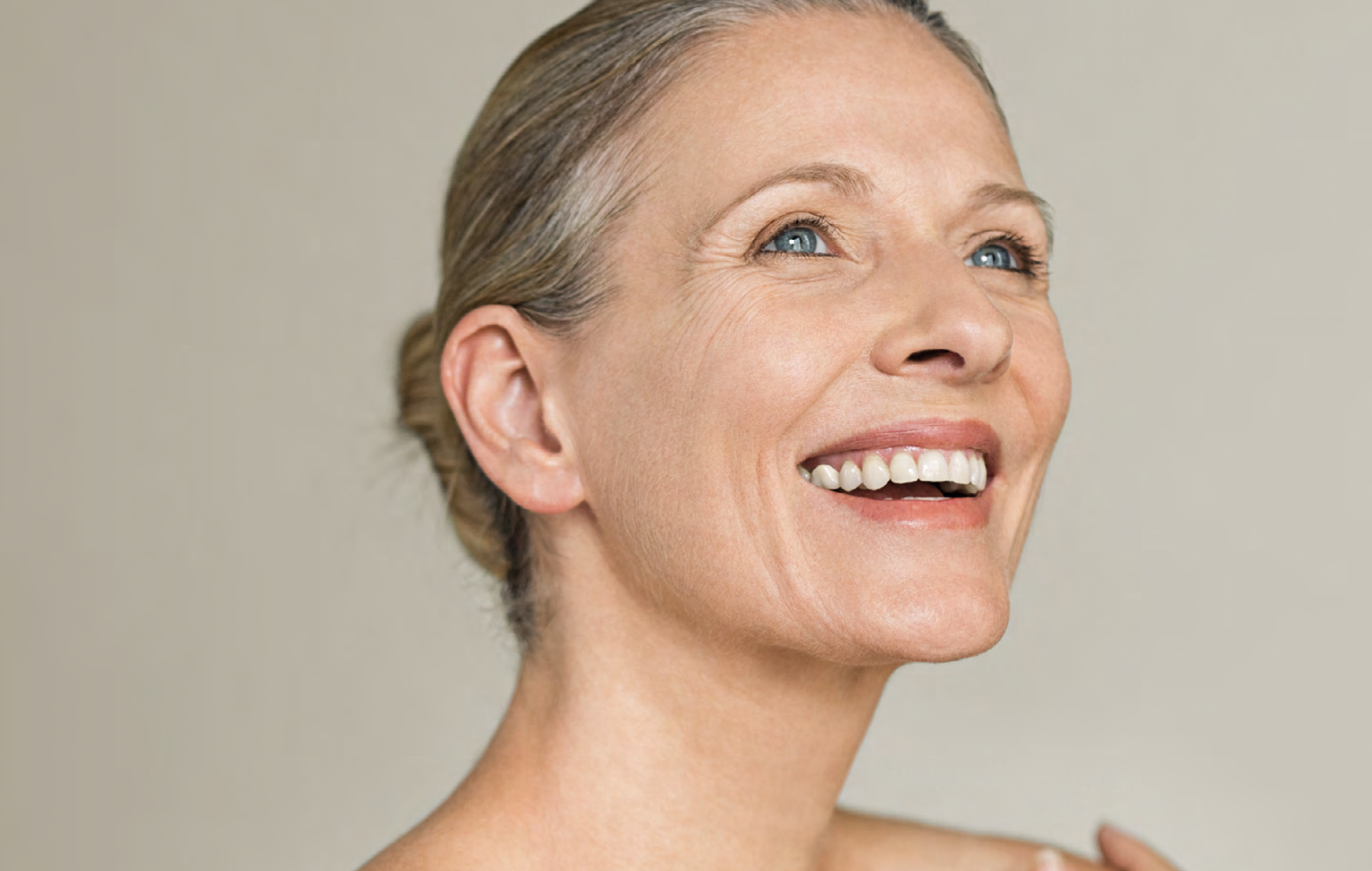By Wendy Haaf
When the skin you’re in starts causing problems, you’ll be happy to know that the condition can usually be controlled
The body’s largest organ, the skin performs myriad functions, from detecting touch and temperature to producing vitamin D to defending against viruses and bacteria. Over time, however, the accumulated fallout from some of these functions, plus genetics and other factors, can set the stage for conditions that threaten the health and integrity of this miraculous protective wrapping. Here’s what you need to know.
Actinic Keratosis
Actinic keratoses (the plural of keratosis) “are rough, bumpy, red scaly bits that tend to appear on chronically sun-exposed skin—in men, often in places where they used to have hair,” says Dr. Kerri Purdy, the division head of dermatology and an associate professor at Dalhousie University in Halifax and past president of the Canadian Dermatology Association. Common sites include the scalp, forehead, temples, nose, ears, hands, arms, and chest. In addition to being unsightly, actinic keratoses can sometimes cause discomfort. “When they are advanced, they can become painful—patients describe them as feeling like a shard of glass under the skin,” says Dr. Lyne Giroux, a dermatologist at the Sudbury Skin Clinique in Sudbury, Ont., and a Canadian Dermatology Association spokesperson.
The reason that these areas are raised is a disruption in the life cycle in cells that make up roughly 90 per cent of the skin: keratinocytes. Normally, over approximately four weeks, keratinocytes make their way from the deepest layer of the skin to its surface, where they die and slough off. With an actinic keratosis, however, these cells “don’t know how to die,” Giroux says—the DNA instruction manual in their core has become damaged. Since they don’t shed like they’re supposed to, “they feel scaly when you rub your finger over them,” she adds.
It’s the cumulative effects of ultraviolet radiation—specifically UVA rays—that throw the cell’s genetic machinery off-kilter. “Actinic keratoses are from years of sun exposure,” says Dr. Cheryl Rosen, a dermatologist at Toronto General Hospital and UHN and a member of the Canadian Dermatology Association’s Sun Awareness Working Group.
Rarely, actinic keratoses can evolve into squamous cell carcinomas, which belong to a group called keratinocyte (previously known as non-melanoma) skin cancers. “Since we don’t know which ones will and which ones won’t, we treat them,” Rosen explains.
Small lesions can be frozen with liquid nitrogen, so they blister and eventually slough off as the skin heals. This can take one or more sessions, depending on the thickness of the growth. The same result can be achieved using a topical chemotherapy cream called Efudex (fluorouracil), typically for two to four weeks. “I have a lot of patients who prefer liquid nitrogen, because for the Efudex to work, you have to go through a stage where you’re pretty red and messy,” Rosen says.
Another option is a cream that primes the immune system to destroy the damaged skin cells—imiquimod (Aldara). However, this medication is expensive and, unlike Efudex, isn’t covered by publicly funded provincial drug programs. Imiquimod is typically applied twice weekly for 12 to 16 weeks, and a 30-dose supply costs about $355 to $465. Finally, “there are some laser-based therapies, as well,” Purdy says. However, she adds, “not every dermatologist does these treatments, and they’re not covered in all provinces.”
It’s not enough to get rid of potential pre-cancers; preventing further UV damage by minimizing sun exposure is important. Sun-protective strategies include seeking shade, wearing a wide-brimmed hat and UV-blocking clothing, and regularly applying sunscreen. One key message about sunscreen is that lack of a burn doesn’t equal no UVA damage. “The problem with sunscreen is that the SPF number refers only to UVB, so if you’re using a high SPF but you’re not reapplying it, you’re getting UVA damage,” Giroux explains.
According to Purdy, this means you need to add another layer every three to four hours—every two if you’re wet or sweaty. For more expert advice on sun protection, visit dermatology.ca and click on “patients and public.” (This section also includes pages on actinic keratosis, basal cell carcinoma, and squamous cell cancers.)
Eczema
“There are two peaks for eczema—in infants and young children and in seniors,” Giroux says. There are also several types that can come on later in life.Common among these is asteatotic eczema, also known as xerosis, which is essentially very dry and sometimes itchy and/or cracked skin. This is due to a breakdown of the protective barrier of oils that normally seals moisture in the skin. “As we get older, we tend to have less ability to maintain that barrier,” Purdy notes.
Other factors that can play a role range from lack of humidity in the winter months to too-hot showers to the use of harsh soaps and skin-care products containing irritants such as fragrance and certain preservatives. And even at this stage in life, it’s also possible to develop an allergy to an ingredient in one of your personal-care products. “Some people may have been using something for many years before developing an allergy to a component,” Purdy explains.
In addition, “a lot of medications can cause eczematous reactions,” Giroux says. These can manifest as a red, itchy rash and/or raised bumps or even resemble severe sunburn. Hydrochlorothiazide, a diuretic used to treat high blood pressure, for example, can cause what’s called a photo-allergic reaction to sunlight. “And these reactions can be delayed—someone might start on the medication in December and get the rash only when they’re outside in the summertime, so they don’t make the connection,” Giroux says. “In some cases, your body slowly builds up these reactions, so they can take months to years to develop.”
Other medications, such as amlopidine (Norvasc) and other members of the calcium channel blocker family of blood pressure drugs, can contribute to the development of a form of eczema called stasis dermatitis. People with conditions that cause poor circulation and fluid buildup in the lower legs are also prone to this skin problem, symptoms of which can include darkening of the skin and an itchy rash. What’s thought to be happening is this: high pressure in the blood vessels causes fluid to leak into the surrounding tissue, triggering an immune reaction in the skin. “It essentially revs up your immune system,” Purdy explains. So while symptoms can remain localized in the lower legs, “some people can get a rash all over.”
Nummular eczema can also appear for the first time around the half-century mark. “There are a couple of peaks when this occurs: the first is in childhood, but the second is between age 40 and 60,” Purdy says. “You get these very itchy coin-shaped, scaly plaques that tend to be on the arms and legs but can show up anywhere.” In some cases, she adds, “it can get so itchy and inflamed that it turns blistery and oozy, so it’s often misdiagnosed as infection.”
Yet another skin problem that falls into the eczema category can accompany neurological conditions. “People with Parkinson’s, for instance, have an increased risk of seborrheic dermatitis,” Rosen says. Typical symptoms include “redness and scaling on the sides the nose and in and between the eyebrows.”
Strategies for treating and managing eczema differ by subtype. For very dry skin, Giroux advises, “keep your showers not as hot or as long and use a pH-neutral cleanser” in lieu of soaps, which are alkaline and can strip moisture from the skin. A number of companies—such as Cetaphil, CeraVe, Spectro, and La Roche-Posay—offer these gentler options. After showering or bathing, “pat dry and then apply a moisturizer,” Giroux says. Again, there are a number of different brands to choose from: the trick is finding one you’ll use consistently. You can find suggestions for products that are pH neutral, free of allergens and irritants, and safe for the skin at producteliminationdiet.com. Two other sites that feature lists of expert-approved products are dermatology.ca and eczemahelp.ca.
For itching and rash, it’s worth checking in with your health-care provider so he or she can rule out more serious underlying conditions and discuss whether one of your medications might be to blame. If your symptoms are associated with leg swelling or varicose veins, your doctor may order an ultrasound to check the circulation in your arteries. “If the arterial circulation is fine, then compression stockings can be really helpful,” Rosen says.
As for treating eczema, “we normally use topical corticosteroids to calm the inflammation,” Giroux says. These medications are typically used to manage short-lived flare-ups or during initial treatment of chronic symptoms, since they can cause thinning of the skin when used for prolonged periods. Consequently, “if possible, we like to use non-cortisone alternatives for long-term maintenance,” Giroux explains. The options are topical tacrolimus (Protopic), pimecrolimus (Elidel), and crisaborole (Eucrisa).
Unlike corticosteroids, which more broadly suppress the skin’s immune system, these medications target only a single step in the inflammatory cascade and don’t pose any risk for skin atrophy or thinning. However, they aren’t inexpensive (running approximately $85 and upward for a 30-gram tube), and most provincial drug plans will cover them—if at all—only in specific situations.
For those with very severe eczema, some clinics, including Giroux’s, offer narrowband UVB phototherapy. “It can be done two or three times a week, and typically it takes about three months to see remission,” Giroux explains. Finally, she adds, “there are some systemic [oral and injectable] medications that are available for very severe eczema patients.”
Seborrheic dermatitis, on the other hand, while having some features similar to those of eczema, “is managed slightly differently,” Purdy says. “Typically we try a combination of topical creams and medicated shampoos.” While this condition isn’t caused by a yeast or fungus that normally lives on the skin, anti-fungal and anti-yeast creams do help improve symptoms, so topical creams tend to comprise a mixture of one of these and a mild corticosteroid. Similarly, anti-fungal dandruff shampoos and body washes (such as Nizoral) are very effective, Purdy says, provided they’re used correctly. “Rub it in, and leave it on ideally for five minutes before you rinse it off.”
Rosacea
While the early signs of rosacea typically come on in one’s 20s or 30s, “many people are diagnosed with it for the first time in their 50s and 60s,” Purdy says, because the symptoms have become more noticeable or bothersome.
The symptoms depend on the type of rosacea. “Very generally, there are four subtypes,” Purdy explains. Vascular or flushing/blushing rosacea, as the name implies, is ruddiness or redness due to swelling in the blood vessels under the skin. Papulopustular rosacea involves little pimples and bumps. Phymatous rosacea typically appears as “thickening in areas like the nose or the chin of the type that, in the past, was often inappropriately attributed to alcohol overuse,” Purdy adds. Ocular rosacea is often diagnosed by optometrists or ophthalmologists since dry- or gritty-feeling eyes is one symptom. Another is redness, swelling, and irritation of the eyelids, which is sometimes accompanied by dandruff-like flakes in the eyelashes.
With all types of rosacea, following the type of gentle skin regimen recommended for eczema can reduce flare-up frequency by minimizing irritation. Sun protection is critical, too, since UV rays can bring on symptoms. And sunlight is just one potential trigger: others include extremes in temperature, high winds, alcohol, sugar, and hot or spicy foods, Giroux says. Identifying your individual triggers and avoiding them where possible may help with symptom control.
When it comes to treating vascular rosacea, certain types of laser- or light-based therapy, such as intense pulsed light or broadband light, may be considered. These therapies help break down the tiny vessels responsible for symptoms. However, not every dermatologist accommodates these procedures. “For example, I don’t do laser or any aesthetics,” Purdy says. And unfortunately, since symptoms are deemed a cosmetic problem, provincial health plans don’t usually cover the cost of these treatments, although some private insurers may. Prices vary widely, starting at around $150 to $475 per session. Treatments are typically done every three weeks for three or more sessions.
When pimples or bumps are a prominent symptom, it’s thought that the cause is a sensitivity to a mite that is part of the normal flora living on our skin. “When conditions are right, it may overgrow or the person may react more strongly to it, which can create inflammation,” Giroux says. As with seborrheic dermatitis, while an infection isn’t the cause, topical agents that curb the growth of bacteria, yeast, or parasites are the first line of treatment. In this case, they’re prescription gels or creams, such as metronidazole (Metrogel, Noritate), azelaic acid (Finacea), and ivermectin (Rosiver). The first two of these are covered by public plans in some provinces. “If those don’t work, we’ll typically use oral antibiotics because they have anti-inflammatory properties,” Giroux explains. “The most common one used is doxycycline. If someone has private coverage, there are some low-dose formulations of doxycycline that are preferred [because they’re less likely to cause side effects, such as yeast infections and diarrhea]. They just keep the inflammation down.”For skin thickening, “there are different laser therapies and surgical techniques,” Purdy says.
As with eczema, rosacea symptoms can come back even after successful treatment. However, while neither condition can be cured, there are more therapies than ever for managing them, so they can usually be controlled.
Other Conditions
If you’re having any ongoing skin symptoms, your doctor can narrow down the potential causes largely by looking at the pattern they follow. For example, if you’ve never had eczema and you suddenly develop a rash on your hands or face, the leading possibilities include an irritant or allergic reaction to something you’ve touched or applied to your skin. In some cases, your health-care provider may order tests to rule out potentially serious underlying conditions. For instance, some symptoms of bullous pemphigoid, an uncommon autoimmune blistering disease that affects only older adults, overlap with eczema. A skin biopsy can help differentiate between the two conditions.
One scenario in which you should seek prompt medical attention is if you have pain or tingling in a strip of skin—typically on one side of the body—followed by a painful rash, raised dots, redness, or blistering. These point to the possibility of shingles, which can lead to complications such as skin infection, persistent nerve pain, and serious eye inflammation or damage. Antiviral medications can reduce these risks, but they’re most effective when started within 72 hours after the rash first appears. Getting treatment is particularly urgent if the rash is near the eye or you experience eye pain or sensitivity. Most common in people 50 and older, shingles occurs when the same virus that causes chicken pox—which lies dormant after infection—reactivates. Shingles vaccinations reduce the risk of both shingles itself and its complications.
While not as pressing, “if you have a spot that is spontaneously bleeding or not healing or growing over more than a month, it’s worth getting it checked out by your health-care provider,” says Dr. Kerri Purdy. The chief suspects here are squamous and basal cell skin cancers, which, though unlikely to spread, are worth dealing with earlier than later. “The smaller they are when you catch them, the easier they are to remove and the smaller the scar is,” she explains.





